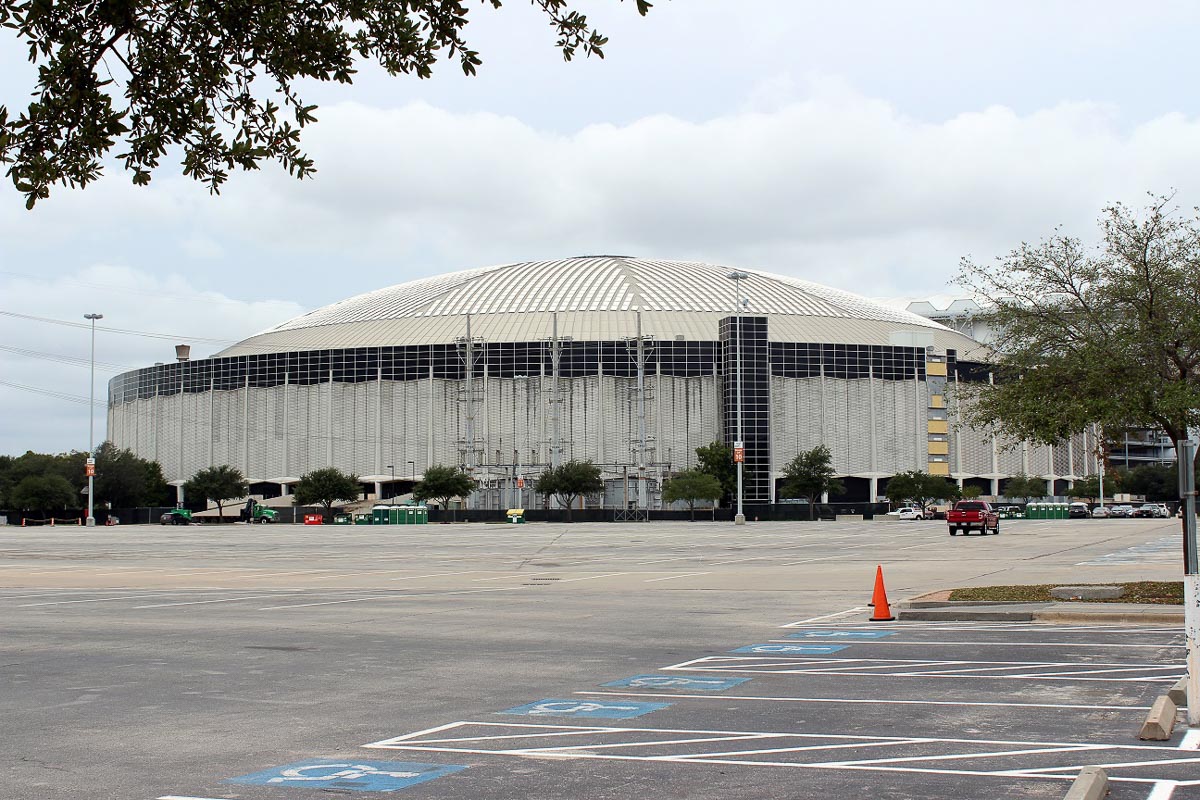When the Houston Astrodome opened in 1965, it was considered a modern marvel. The domed stadium was the first of its kind and a true engineering feat. Houston -- home to NASA and the oil industry -- had once again triumphed over nature, this time figuring out a way to eliminate the uncomfortable and unpredictable aspects of the outdoors.
No longer would Houston sporting events be subject to the brutality of Mother Nature, along with her harsh rains and blistering heat
The Astrodome inspired other structures in the subsequent decades, but eventually, domes went out of style. The Houston Oilers football team left town following the 1996 season. The Houston Astros departed for a new downtown stadium after 1999. The Houston Livestock Show and Rodeo found a new home after 2002.
The Astrodome, once the gem of the city, has been allowed to deteriorate ever since, save for a three-week stint in 2005 when it got a curtain call in the national spotlight as home to tens of thousands of displaced Hurricane Katrina evacuees.
Today, the Astrodome has no permanent tenant and it isn't used for events. Essentially, it serves no function other than to elicit the nostalgia of millions of area residents.
For years, local officials have been trying to figure out what to do with the county-owned stadium, yet they've reached to conclusion. In 2013, Harris County voters rejected a plan to issue $217 million in bonds to renovate the facility into "The New Dome Experience." Though county officials at the time suggested a "no" vote would result in demolition, they didn't make good on their threat.
Now, the facility continues to sit in limbo, as advocates hold out hope that some sort of "public-private partnership" can breathe new life into the Astrodome, somehow, one day in the future.
As the years go by, the Astrodome continues to show its age. There is little money spent on any sort of maintenance -- though it got a power wash last year -- and these days, the only major operating expense is the lighting bill.
This month, the Astrodome's operators opened up its doors to a group of urban planners who visited Houston for a national conference. The Urban Edge came along and photographed the decaying facility.

The facility isn't open to the public, but occasionally, officials allow reporters and other groups a glimpse. Public access is so rare that when officials opened the Astrodome's doors for a 50th birthday celebration, a crowd of 25,000 people showed up. Photo by Ryan Holeywell.
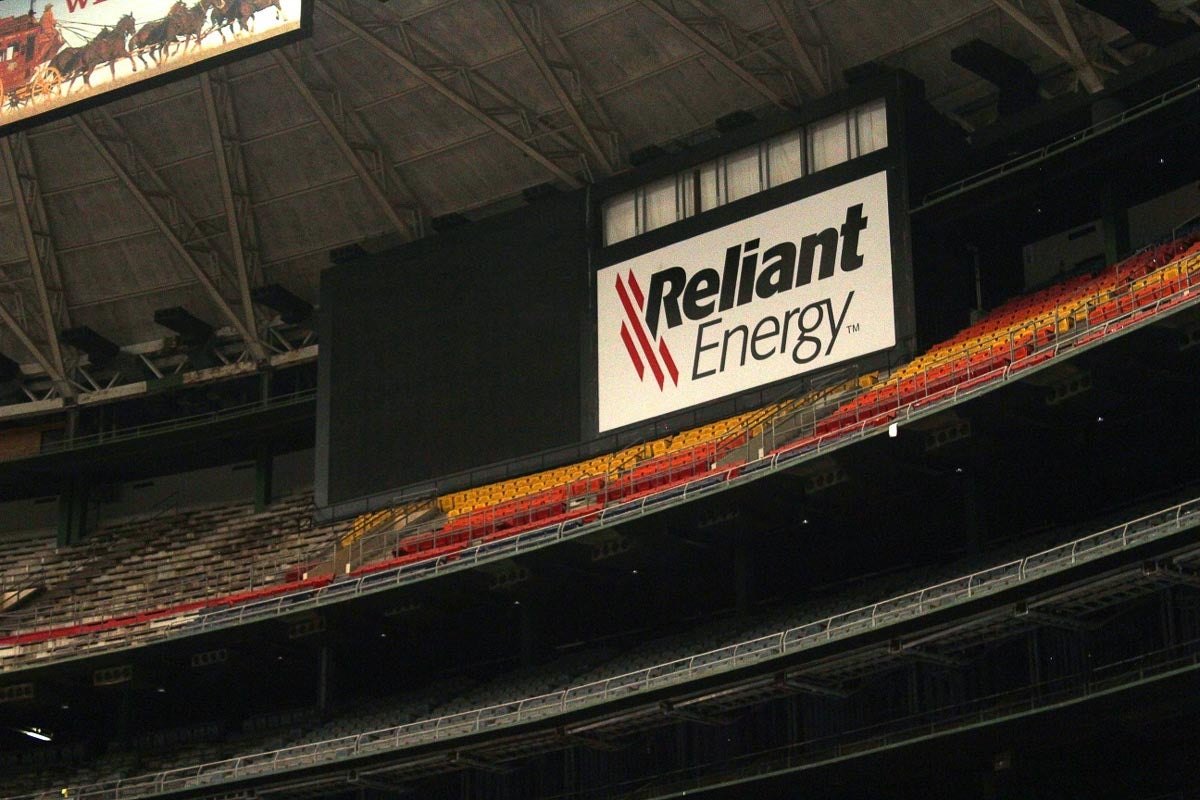
Advertisements from companies' whose logos have changed dot the interior of the stadium. Houston electric provider Reliant Energy was acquired by NRG Energy in 2009 and now has a new logo, yet the old one remains hanging in the upper deck. Nearby is an advertisement for Continental Airlines, which no longer exists after being acquired by United Airlines in 2010. Photo by Ryan Holeywell.
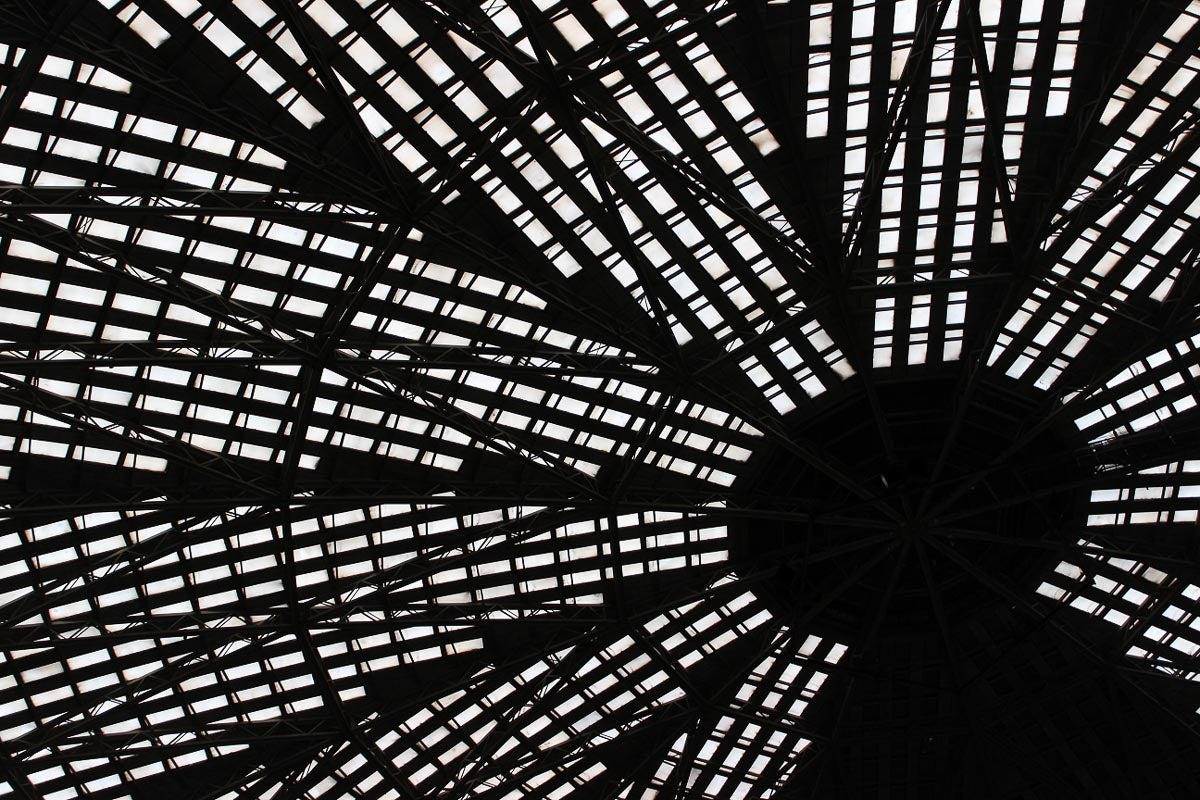
The Astrodome's iconic roof provides a dramatic silhouette. The roof is the most significant of the Astrodome's engineering breakthroughs. The style of roof had previously been used on domes that spanned 285 feet, but the Astrodome roof is more than 640 feet across. Photo by Ryan Holeywell.
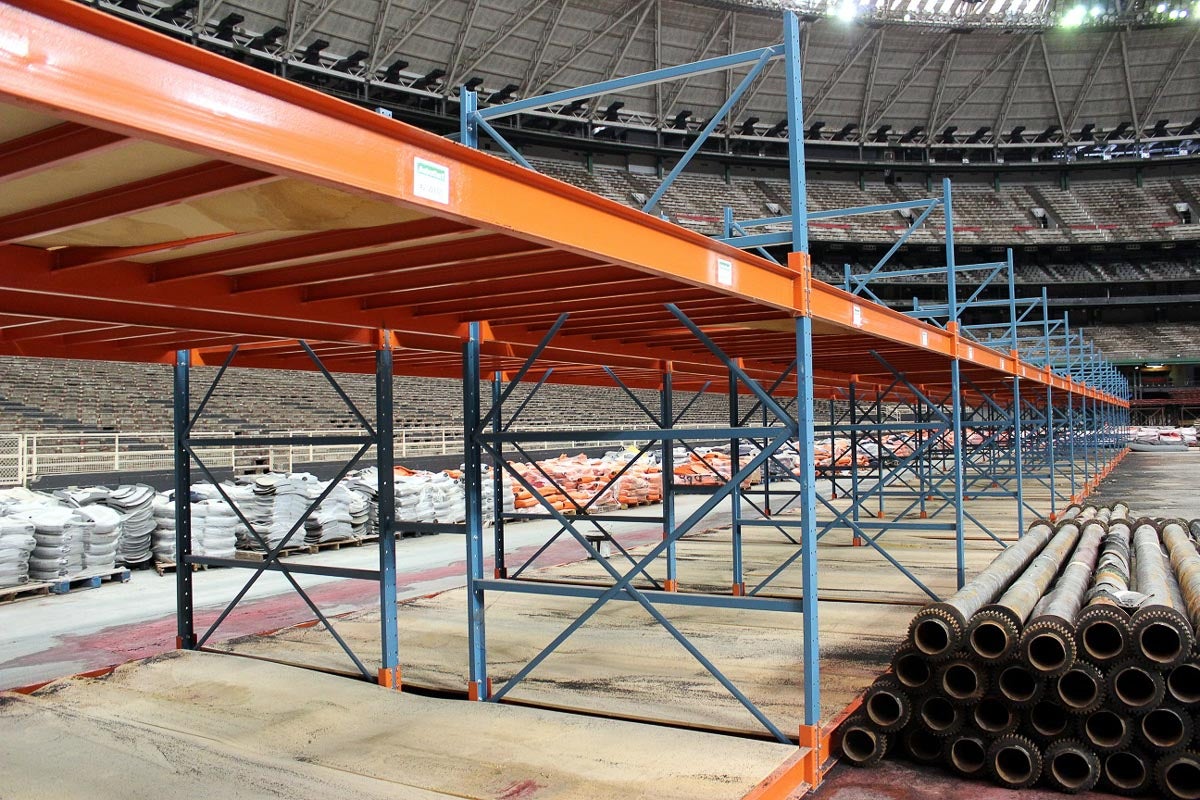
Astrodome seating sections along the stadium floor sit atop railroad-style tracks that allows them to be reconfigured depending on the type of event taking place. Photo by Ryan Holeywell.
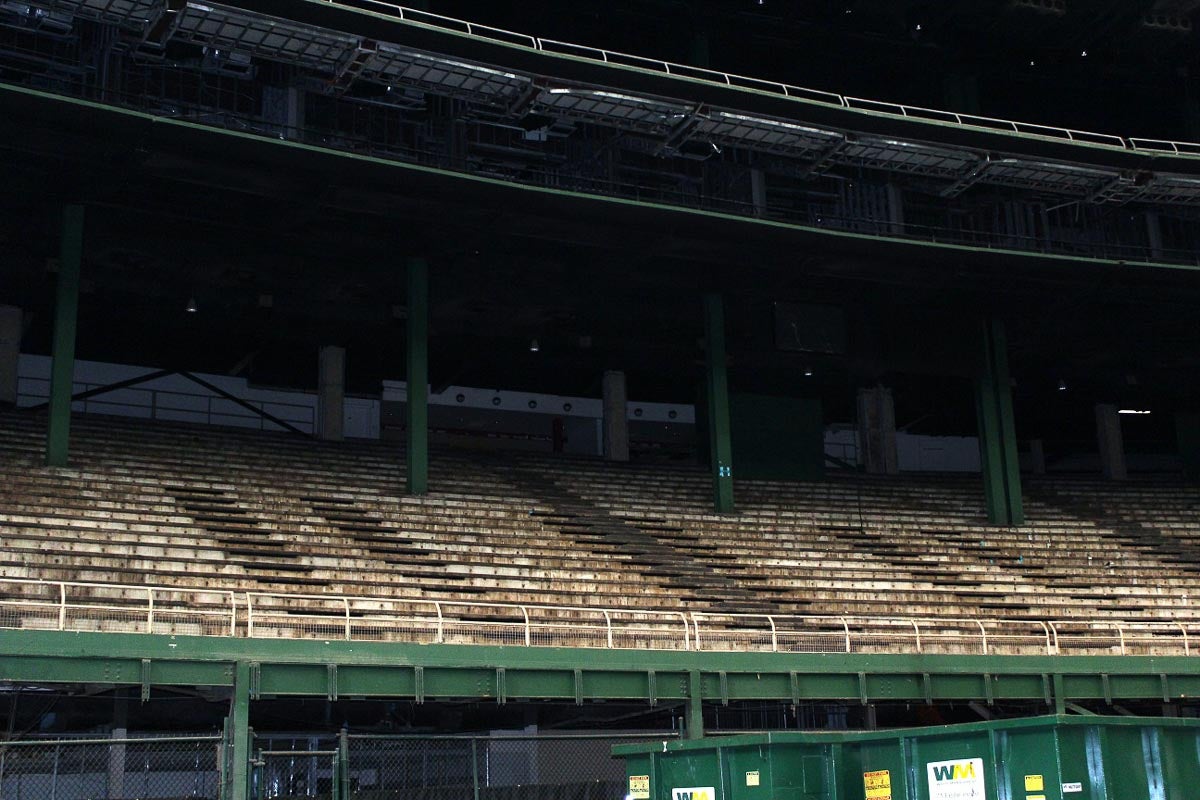
Despite being a modern stadium, the outfield grandstand still had seats with obstructed views. Photo by Ryan Holeywell.
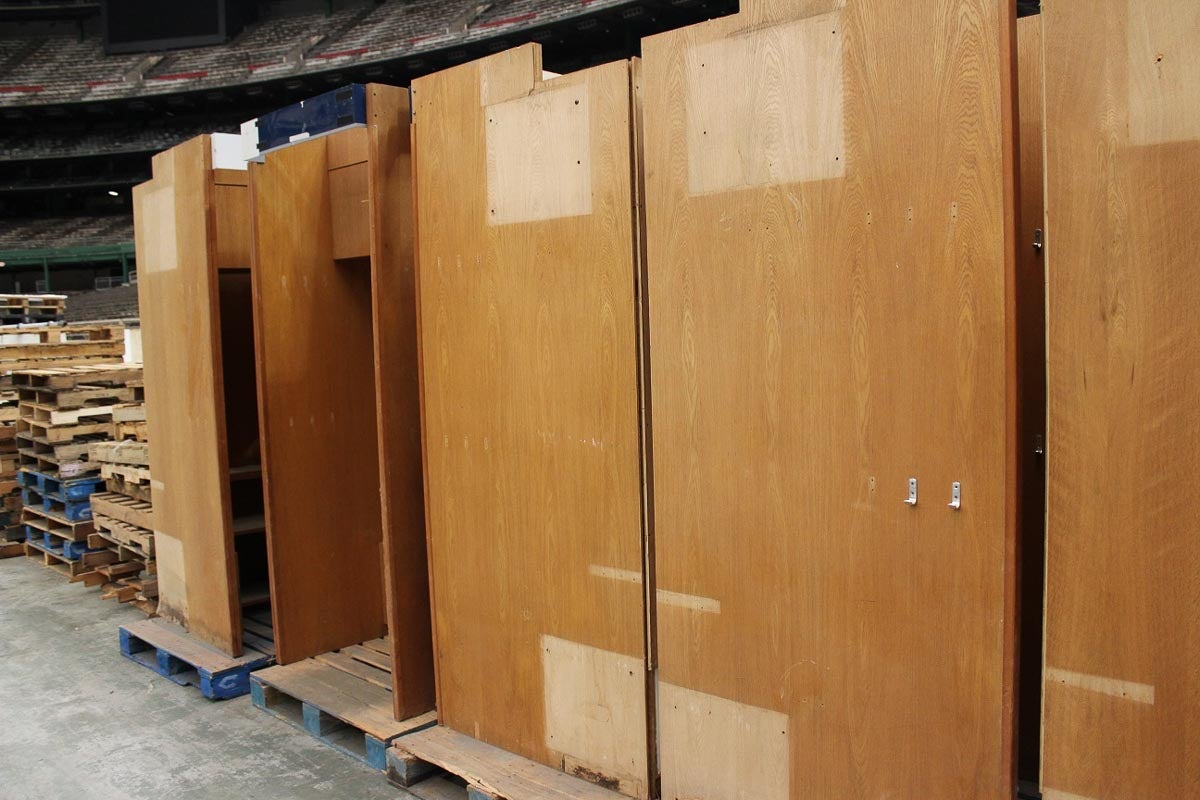
The home team's lockers have been removed from the locker room and sit on the Astrodome floor, along with a smattering of other furniture. Photo by Ryan Holeywell.

The green metal plates on the stadium floor slide out and provide storage for massive quantities of AstroTurf. Dumpsters filled with debris will eventually be hauled away from the facility. Photo by Ryan Holeywell.
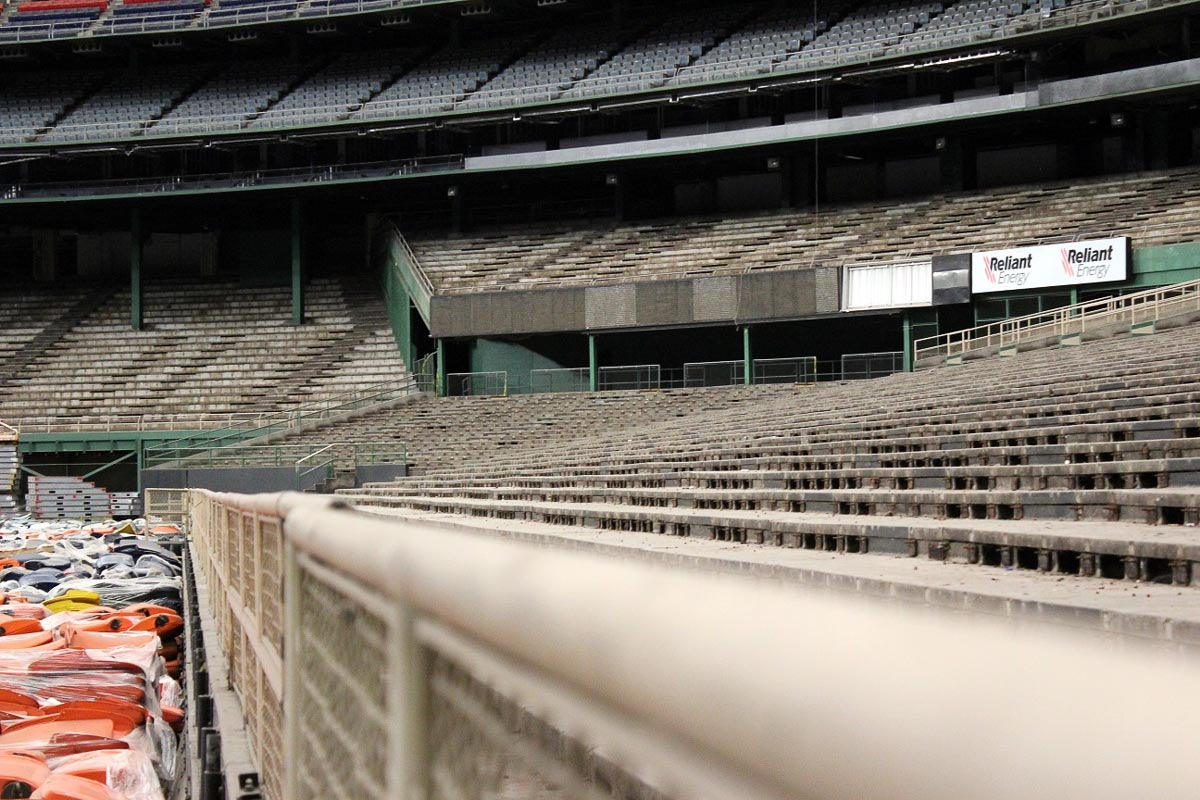
The Astrodome had a seating capacity of 52,000 for baseball but could be expanded to 66,000 for other events. Many of those seats were cushioned, which is unusual for a baseball stadium. Photo by Ryan Holeywell.
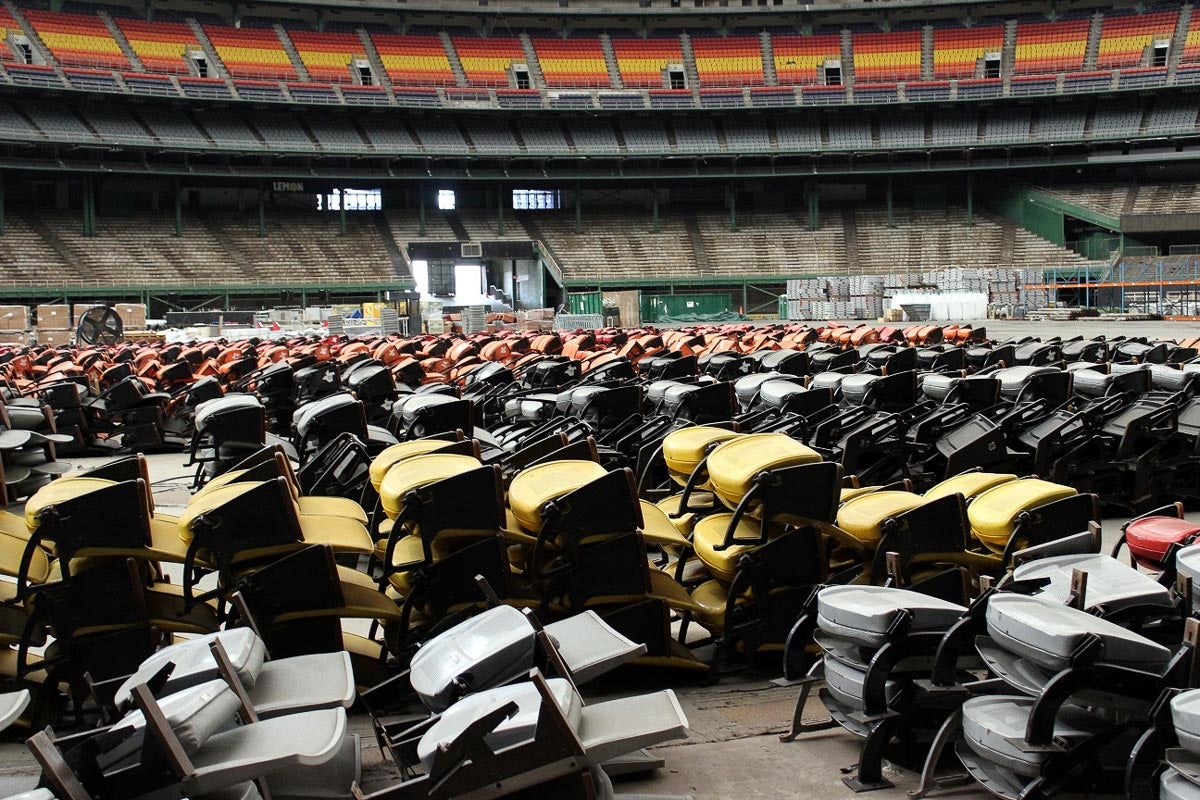
The iconic red, yellow and orange seats mirror the Astros' "Tequila Sunrise" uniforms from the 1970s. Those seats stayed, even as the uniform colors changed over the years. The floor of the Astrodome right now is bare, exposed concrete. Photo by Ryan Holeywell.
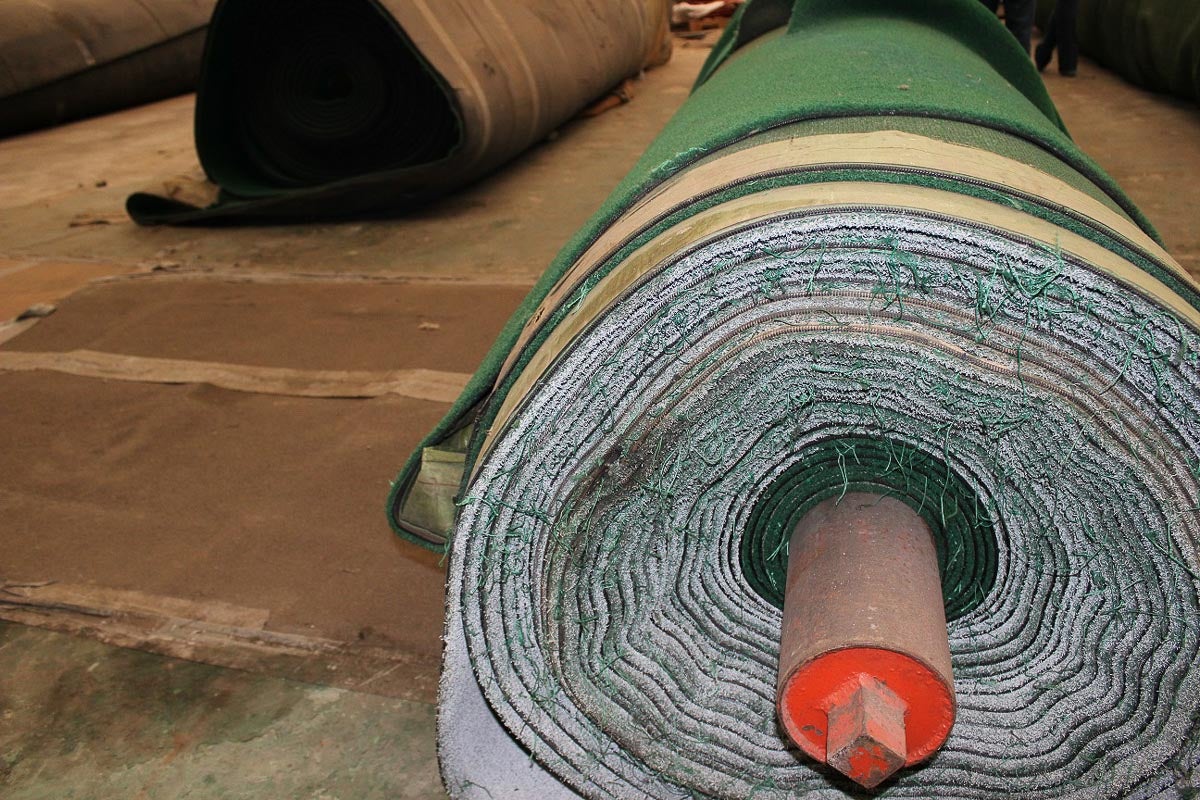
Several large pieces of AstroTurf remain in rolls on the floor. The stadium originally had a grass field that grew due to the stadium's semitransparent roof. But when the roof's glare made it difficult for players to see fly balls, it was painted. The resulting lack of sunlight killed the grass, leading to the installation of ChemGrass, later known as AstroTurf. Today, the Astros sell pieces of AstroTurf in their team store for nostalgic fans. Photo by Ryan Holeywell.
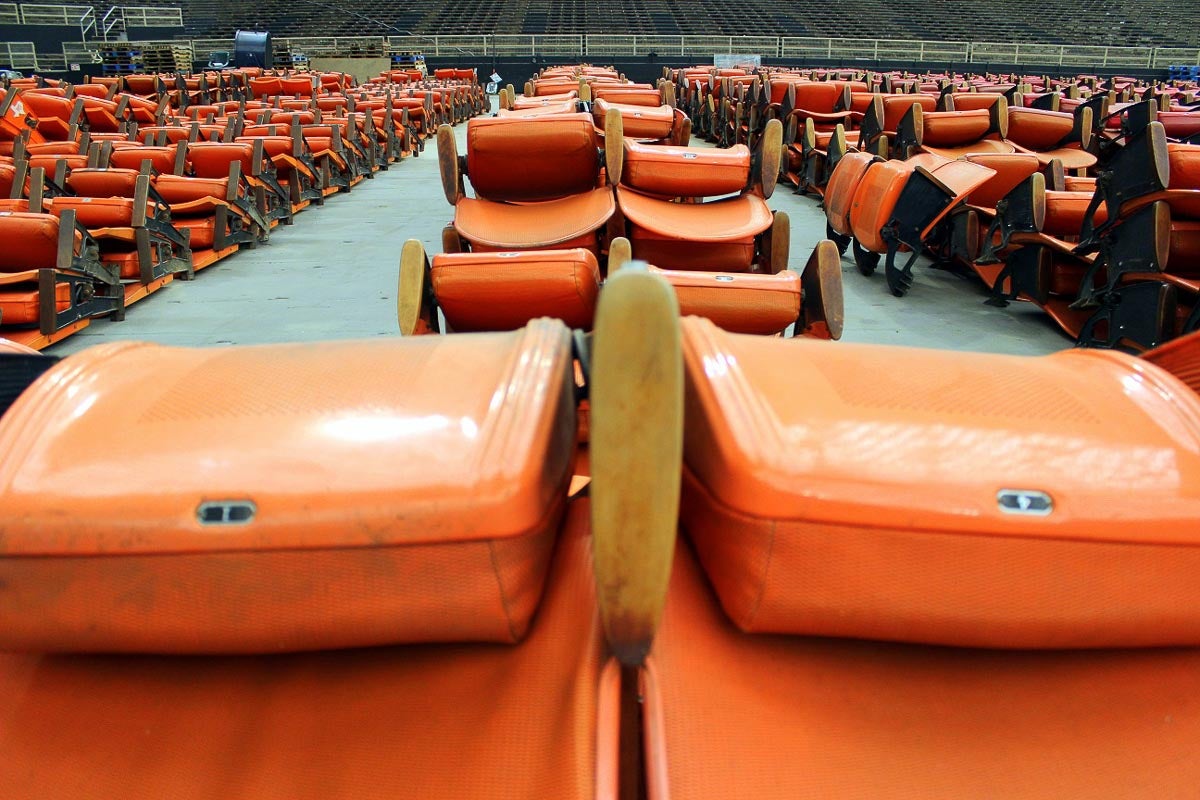
Hundreds of seats have removed from the stands and sit on the Astrodome floor. The county has sold thousands of seats for $200 per pair to fans who want to bring a piece of the Astrodome home. Photo by Ryan Holeywell.
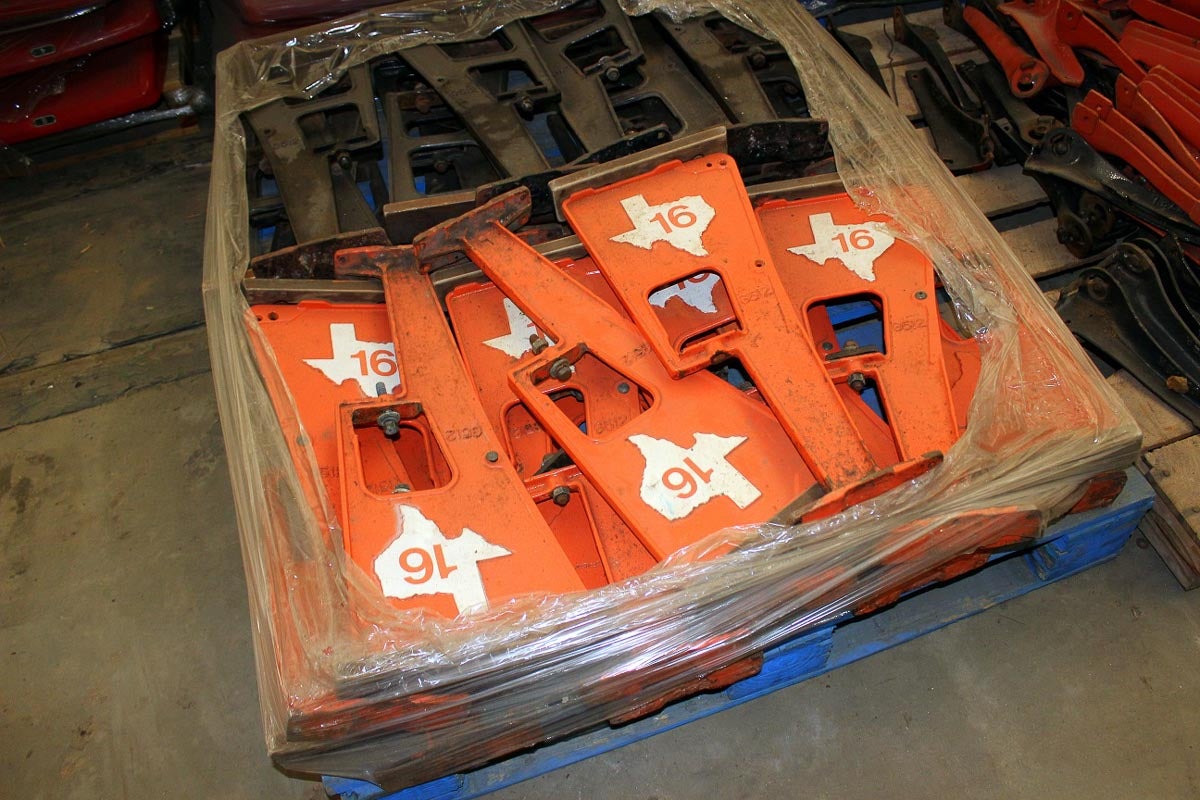
Aisle numbers in the Astrodome were emblazoned with an outline of Texas. Photo by Ryan Holeywell.

A collection of turnstiles stands on the Astrodome floor among other furniture and memorabilia. Photo by Ryan Holeywell.

Damaged seats and couches from luxury suites at nearby NRG Stadium -- home to NFL's Houston Texans -- are stored on the floor of the Astrodome. The Astrodome has become something of a warehouse for the entire NRG Park facility, which includes an event hall and a small arena, in addition to the two stadiums. The furniture will later be disposed of at county auction. Photo by Ryan Holeywell.
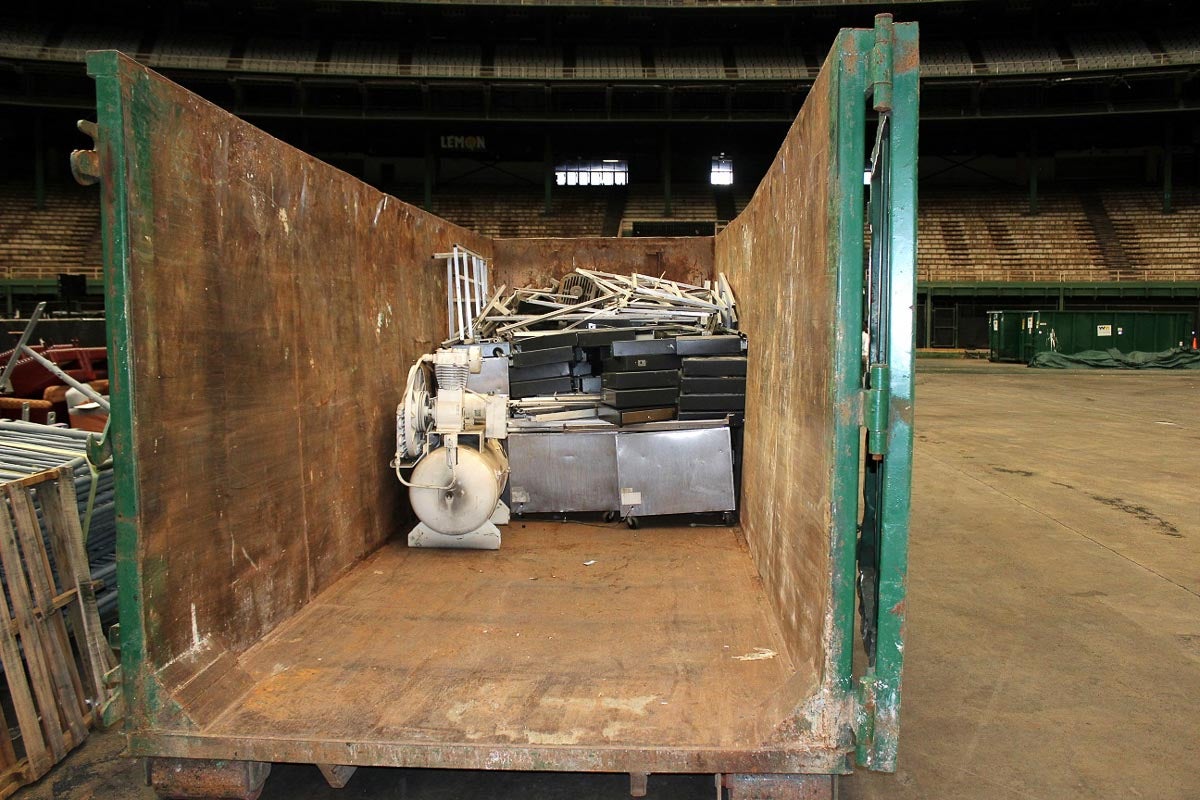
Today, the Astrodome remains in its football configuration. Scenes from the 2004 film Friday Night Lights were filmed in the Astrodome, with advertisements covered up and replaced with those for 1980s-era companies like Pan Am and Gulf Oil to reflect the era depicted in the movie. Photo by Ryan Holeywell.
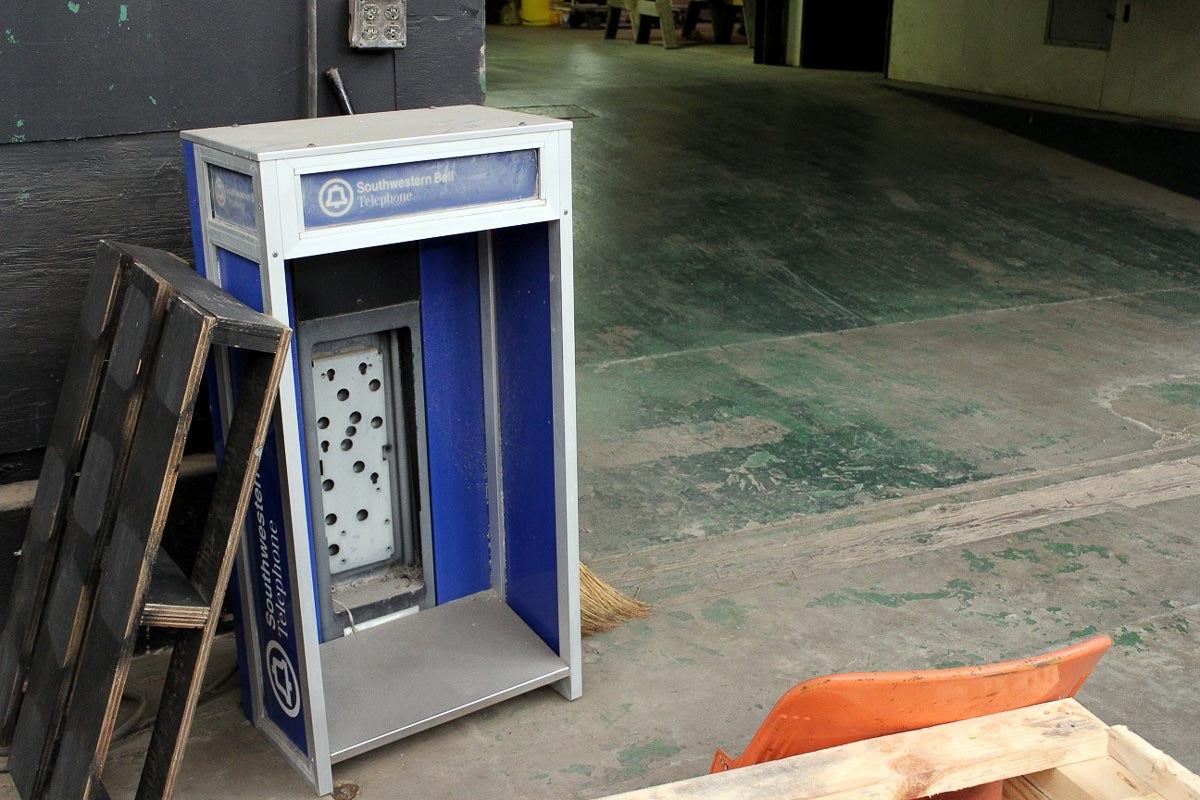
In 1999, when the Astrodome closed, only about 60 percent of Americans owned a cell phone, so phone booths -- rarely seen in the U.S. today -- were common. Photo by Ryan Holeywell.

